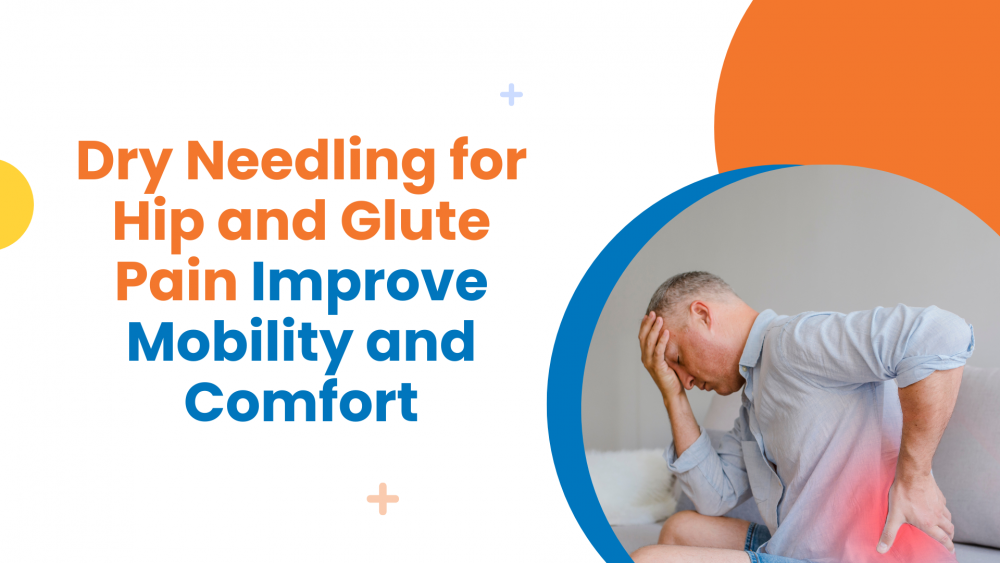You may or may not know, but around 70% of people across the world are going through chronic pain. Thankfully, there are many non-invasive treatment options available. One of the best options is dry needling for hip and glute pain. This is one of the newest, but highly effective therapies that is preferred by people to relieve the pain. Now, the question is – what does dry needling mean? To find out more about the same, keep on reading this post for detailed information.
What does dry needling mean?
Knowing the meaning of dry needling will help patients know its pros and cons. In simple terms, dry needling is one of the treatment options where a dry needling expert inserts thin and dry needles into the knotted muscles to alleviate pain.
This is used to trigger the body’s natural pain-relieving ability and release muscular tension. In addition to this, dry needles are inserted into the affected areas to improve mobility, disrupt muscular dysfunction, and alleviate pain.
People who are opting for dry needling & pain management often ask – does it really work? The answer is a big yes. Dry needling is an evidence-based, and highly effective treatment option that targets inflammation and muscle tension.
What is the origin of dry needling?
Dry needling has emerged as an effective and contemporary approach used to treat muscular tension, trigger points, and alleviate musculoskeletal pain. However, some people think that it is acupuncture. This is not acupuncture but a different method for treating pain and improving bodily functions and structure.
When it comes to dry needling for hip and glute pains, it is designed to address and treat the root causes behind the issue. To release the pain and provide instant relief, the experts will insert thin needles into the knotted or targeted muscles. This means you can reduce pain, release tension, and restore overall functions with dry needling.
So, if you are looking for a safe treatment option to get rid of the pain you are experiencing in the hip and glute, no other thing is no better option than dry needling. However, it is mandatory to find a reliable physiotherapy and dry needling center to get effective solutions.
What is the science behind using dry needling for hip and glute pain?
If you are experiencing restricted movements and muscular pain, you can use dry needling for hip and glute pain. This therapy is used to target the trigger points and knotted muscles. Here are some important aspects of this treatment for hip and glute pain:
- Only certified & well trained physiotherapist can perform the dry needling therapy. They generally use thin and dry needles to target knotted muscles so that muscular tightness and overall tension can be released.
- The process of dry needling will stimulate the pain-relieving chemicals in the body so that it can start healing naturally.
- Dry needling & pain management is not just the process of relieving pain, but it also improves the range of motion and overall mobility.
- Anyone looking for a non-invasive approach to disrupt dysfunctional muscular patterns, no other treatment is better than dry needling, as it will restore function and decrease pain.
- You may or may not know, but dry needling is one of the best ways to improve the blood flow of the tensed muscle. Thin needles are inserted to improve blood circulation to that area.
- When you want to accelerate the natural healing process of your body, you can opt for dry needling as it will reduce discomfort and inflammation.
What are the benefits and potential risks of dry needling for glute and hip pain?
Dry needling is one of the best ways to mitigate the pain you are experiencing in your hips and glutes. Speaking about the benefits, these include the following:
- When used by an expert, they can stimulate the natural healing ability and process of the body.
- In case the blood flow is affected in an area, Dry Needling & Pain Management techniques can promote both.
- Anyone who does not want to get into a long medicine routine can try this approach to feel better.
When it comes to the potential risk, as such, there is nothing serious associated with the dry needling. However, you may experience the following while using it for hip and glute pain:
- Redness or bruising
- Swelling
- Hematoma formation
- Discomfort
- Mild soreness
Remember, these risks are just temporary; you will feel alright within 24 hours of the dry needling session. In general, you will not require any medicine or anything to feel better. In case you notice excess discomfort or pain, contact your dry needling expert instantly (although it is quite rare).
Closing,
Dry needling for hip and glute pain is one of the best ways to treat it. In recent studies, it was found that the pain can go down up to 80% within a few sessions. In case you are looking for an expert or experienced clinic, you can get in touch with PHYSIOREVIVE.



